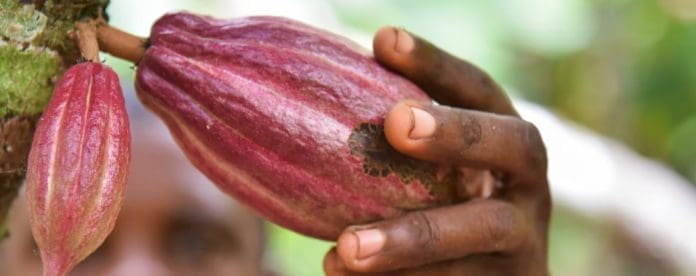Ghana became Africa’s first country to meet international emission reduction verification standards, securing cumulative carbon payments of $16.8 million through its groundbreaking Cocoa Forest REDD+ Programme while 140,000 farmers adopt climate-smart practices across cocoa-growing landscapes. The achievement positions the country as a continental leader in translating forest conservation into direct farmer benefits, though implementation challenges remain substantial.
Ghana’s carbon finance success rests on a distinctive structure. The World Bank’s Forest Carbon Partnership Facility provided initial financing while Ghana’s government committed 69 percent of carbon revenues directly to farmer groups and local communities, a benefit-sharing ratio that exceeds many comparable initiatives globally. The first tranche of $4.86 million arrived in January 2023, followed by $16 million in June 2024 after successful verification of 3.4 million metric tons of carbon dioxide equivalent emissions reductions achieved during the 2020 to 2021 monitoring period. This payment trajectory demonstrates that Ghana’s forest conservation efforts meet rigorous international verification standards consistently.
What distinguishes Ghana’s pathway is the recognition that carbon finance alone cannot drive deforestation-free cocoa. Rather, payments function as catalytic capital within an integrated approach combining verified emission reductions with agroforestry expansion, farmer training, and landscape restoration. The $16.8 million operates alongside Ghana Cocoa Board investments in farm rehabilitation, community-based resource management initiatives, and supply chain traceability systems aligned with European Union deforestation regulations. This integration suggests policymakers view carbon payments not as sector transformation’s solution but as one financial tool among several needed to address complex forest-cocoa-farmer dynamics.
Ghana’s continental distinction carries significance. The country fulfilled all Conditions of Effectiveness under the World Bank’s Emission Reductions Payment Agreement before any other African nation, demonstrating institutional capacity to measure, verify, and report forest carbon outcomes according to international standards. This technical achievement opens doors for scaling. The original agreement specified potential payments up to $50 million for ten million tons of cumulative verified reductions through 2024, suggesting Ghana’s current $16.8 million represents roughly one-third of targeted potential. Future tranches depend on sustained verification success and continued political commitment to forest protection policies.
The programme’s reach across 140,000 farmer participants represents substantial on-the-ground engagement, though questions about benefit distribution warrant scrutiny. Cooperative structures often concentrate advantages among leadership and larger producers while marginal smallholders capture limited gains. Ghana’s implementation framework stipulates that 69 percent of payments flow to farmer groups and communities, yet translating this commitment into equitable farmer income remains operationally complex. Village savings groups, cocoa producer associations, and farmer cooperatives serve as intermediaries, but transparency mechanisms and accountability structures determine whether benefits actually reach intended beneficiaries at the farm level.
The carbon finance achievement arrives alongside mounting external pressures on Ghana’s cocoa sector. The European Union Deforestation Regulation requires deforestation-free sourcing verification for all cocoa entering EU markets, with compliance deadlines in 2025 and 2026. The African Regional Standard for cocoa sustainability establishes parallel requirements. These regulatory frameworks create costs for traceability systems, farm mapping, and farmer certification. Carbon payments help finance these compliance investments, though whether revenues sufficiently offset total implementation costs across 792,954 registered cocoa farmers remains uncertain.
Ghana’s competitive positioning within global carbon markets reflects both opportunity and vulnerability. Carbon pricing varies dramatically depending on project characteristics, verification standards, and buyer preferences. Ghana’s $5 per ton rate reflects verified commodity-based emissions reductions, yet specialized projects elsewhere command premiums exceeding $20 per ton. Meanwhile, international carbon market architecture remains contested. Discussions around Article 6 of the Paris Agreement, bilateral carbon trading arrangements, and voluntary offset standards continue evolving, creating uncertainty about long-term payment reliability. Ghana’s carbon registry remains incomplete, complicating transaction tracking and investor confidence in future programmes.
Structural barriers to farmer participation persist despite financial incentives. Land tenure uncertainty affects roughly 70 percent of cocoa-growing communities, limiting smallholder eligibility for carbon-linked benefits since formal ownership documentation becomes prerequisite for payment claims. Technical expertise gaps among district agricultural extension officers hamper effective farmer engagement with sustainable practices that carbon programmes attempt to finance. The gap between national policy commitments and community-level implementation capacity remains pronounced, suggesting that carbon payments alone cannot overcome institutional constraints limiting programme effectiveness.
Looking forward, Ghana’s carbon finance model faces critical junctures. The country must demonstrate that current payments drive sustained behavioral change among farmers toward forest-friendly practices rather than representing temporary subsidies without lasting impact. Verification protocols for subsequent monitoring periods will determine whether emission reductions continue or stabilize at current levels. Political transitions, budget constraints, and competing development priorities could affect government commitment to forest protection policies underlying carbon payment eligibility.
For Ghana’s cocoa sector, carbon finance represents proof that forest conservation can generate revenue within commodity production systems. The $16.8 million achievement and status as Africa’s first country meeting ERPA Conditions of Effectiveness demonstrate technical capacity and sustained commitment. Yet this success remains partial. It validates programmatic structure and international verification mechanisms while leaving unresolved questions about farmer-level benefits, tenure reform, institutional capacity, and long-term financial sustainability. Ghana’s next chapters will test whether continental carbon finance pioneering translates into genuine transformation of cocoa landscapes or remains a successful programme within a sector still fundamentally shaped by deforestation pressures.
Source: newsghana.com.gh











